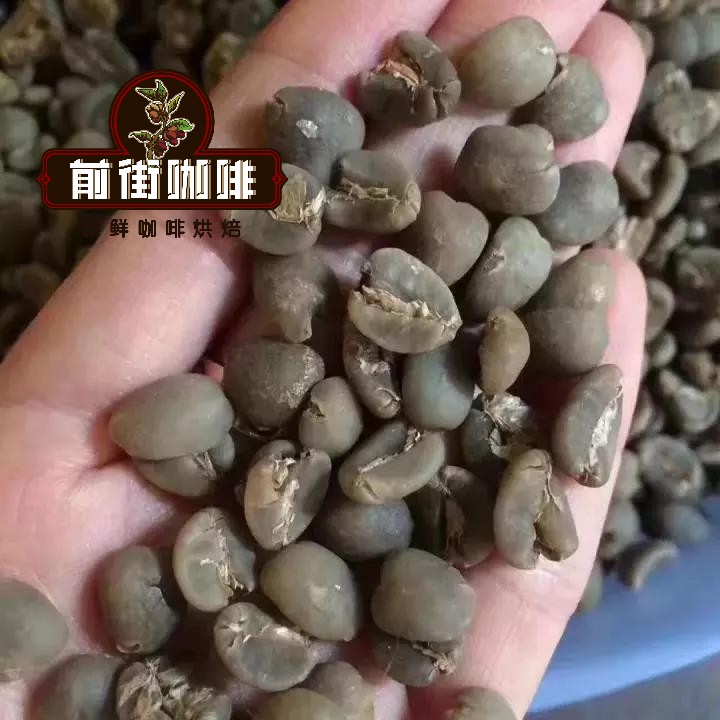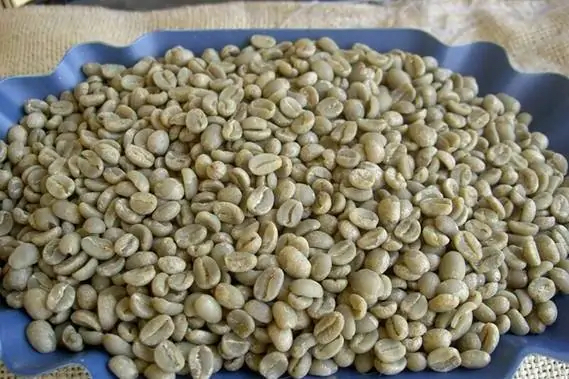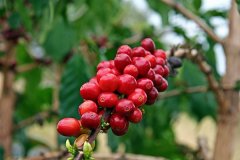Introduction to the characteristics and stories of Arabica bourbon and common bourbon varieties
I believe that many friends will marvel at the huge system of growing coffee beans when they first come into contact with coffee. Like Kaddura, a common coffee bean in Latin American coffee producing areas, it is naturally mutated from a bourbon variety, so what other varieties of bourbon coffee? With this question, please follow the editor into today's coffee knowledge popularization-a brief introduction of the Bourbon family and his mutant family.

Bourbon series
The following are the more common bourbon variants:
El Salvador bourbon
El Salvador is with bourbon as the main force. In 1949, the Salvadoran Coffee Institute selected a delicious bourbon variety. After years of efforts, the improved bourbon with low fruit yield but super delicious was released in 1977. His caramel flavor is stronger than the usual bourbon, and the acid value of the fruit tone is very attractive and distinctive.
Kaddura
Kaddura is a green-topped dwarf Bourbon discovered in Brazil in 1935, but in Brazil, most of them die of too much fruit because of low-altitude soil and water and cultivation methods. Transplant to Colombia, Costa Rica and other places like a fish in water. It is an important variety with both quality and quality in the new world at present.
Pacas
This is another form of short bourbon, a variety of dwarf bourbon found in a coffee garden by a farmer named Pacas in the Santa Ana producing area of El Salvador around 1950. Pacas's brief introduction time is very short, belongs to the high yield energy variety, the flavor is good, the drought and the wind resistance, the planting altitude does not need to be particularly high.
Vera Loeb (villa lobos)
It was found at Vera Loeb Manor, a famous coffee family in Costa Rica, with mild acidity and outstanding aroma.
Vera Saatchi
This is also the dwarf bourbon. In the 1950s, the bourbon variety dwarf coffee tree was discovered in the village of Saatchi in the valley of western Costa Rica. His characteristics are similar to bourbon, most suitable for altitude organic cultivation, lively fruit acid, obvious caramel flavor, low yield but often win prizes.
Bourbon pointed body
The bourbon dwarf found in French bourbon in 1810, but she is quite different from Kaddura, Pacas, Vera Loeb and Vera Saatchi. The bean is not a short circle found in bourbon, but is pointed and thin, and it is easy to look away. The mistake is that it is a poorly developed defective bean. Her fruit yield is the lowest in a series of bourbon dwarf plants, weak and sickly, and it is conceivable that the cost of production is high. Another characteristic is that caffeine is only half of ordinary Arabica, but it has a natural semi-decaf coffee, which tastes delicious and has the delicate aroma of Chinese lychee and citrus. It is the most prestigious coffee ever made by many literati and dignitaries.
Moka (Mokka)
The body of the lemon mocha is small, and the coffee beans are adorable. They are generally regarded as bourbon, and the caffeine is low, accounting for about 0.9% to 1.1% of the bean weight. Recently, it has been found in the academic community that the transmission of mocha and "bourbon pointed body" is very close, both of which are short plants and low caffeine varieties. The Hawaiian research unit produces mixed-race mochas, which are grown in Hawaii, such as Kauai, Oahu, Molokai and Maui. In recent years, it has also been identified from Kona Babica in the Hawaiian Cup test.
SL28

From 1930 to 1940, new varieties with strong disease resistance, high productivity and early tolerance were cultivated by French Mission, a botanist at the Scott Laboratory (Scott Laboratories) in Kenya, and in Lake Tanganyike, Tanzania, and were mixed to produce a variety of excellent berry fruit flavor, which was named SL in English. And 28 is the selected serial number, generally known as S28.
The fruit yield of SL 28 is not low, with 18 tons of raw beans per hectare, and its disease resistance is very strong. It is fascinated by the acidity and sweetness of fermented berries, making it a masterpiece of Ken Coffee.
SL34
This is also from the Scott laboratory, which can be called the "schoolmate" of SL28, and is listed as the main variety of Ken, producing 1.35 tons of raw beans per hectare. The ancient color of SL34 is brighter than that of SL28, and it also has a blood system, but the breeding in the laboratory is regarded as the bourbon series. The taste of SL28 is similar to that of SL28, but the sweet taste is good, but the aroma of raspberry is slightly faint. SL28 is drought-resistant but SL34 is moisture-resistant, so it is co-planted in rainy areas at middle and high elevations.
SL34
This is also from the Scott laboratory, which can be called the "schoolmate" of SL28, and is listed as the main variety of Ken, producing 1.35 tons of raw beans per hectare. The ancient color of SL34 is brighter than that of SL28, and it also has a blood system, but the breeding in the laboratory is regarded as the bourbon series. The taste of SL28 is similar to that of SL28, but the sweet taste is good, but the aroma of raspberry is slightly faint. SL28 is drought-resistant but SL34 is moisture-resistant, so it is co-planted in rainy areas at middle and high elevations.
Important Notice :
前街咖啡 FrontStreet Coffee has moved to new addredd:
FrontStreet Coffee Address: 315,Donghua East Road,GuangZhou
Tel:020 38364473
- Prev

The definition of Fine Coffee and its similarities and differences with individual Coffee beans American Fine Coffee Association Standard
[boutique coffee] as a proper term, boutique coffee (Specialty Coffee) was first proposed in the Tea and Coffee monthly (Tea Coffee Trade Journal) by Ms. Erna Knustsen, who is known as the godmother of boutique coffee, in 1974, showing that only in the most favorable micro-climate and soil and water can quality products with unique flavor be cultivated.
- Next

Introduction to the taste and flavor of Arabica coffee beans
The complex variety family of coffee is a headache. It has been said that the best coffee is iron pickup, although this is an exaggeration, but the world-famous king of coffee for decades, Jamaican Blue Mountain Coffee is Iron pickup. Speaking of which, do you know what a tin pickup is? There is a delicious Blue Mountain coffee on the front street.
Related
- Detailed explanation of Jadeite planting Land in Panamanian Jadeite Manor introduction to the grading system of Jadeite competitive bidding, Red bid, Green bid and Rose Summer
- Story of Coffee planting in Brenka region of Costa Rica Stonehenge Manor anaerobic heavy honey treatment of flavor mouth
- What's on the barrel of Blue Mountain Coffee beans?
- Can American coffee also pull flowers? How to use hot American style to pull out a good-looking pattern?
- Can you make a cold extract with coffee beans? What is the right proportion for cold-extracted coffee formula?
- Indonesian PWN Gold Mandrine Coffee Origin Features Flavor How to Chong? Mandolin coffee is American.
- A brief introduction to the flavor characteristics of Brazilian yellow bourbon coffee beans
- What is the effect of different water quality on the flavor of cold-extracted coffee? What kind of water is best for brewing coffee?
- Why do you think of Rose Summer whenever you mention Panamanian coffee?
- Introduction to the characteristics of authentic blue mountain coffee bean producing areas? What is the CIB Coffee Authority in Jamaica?

